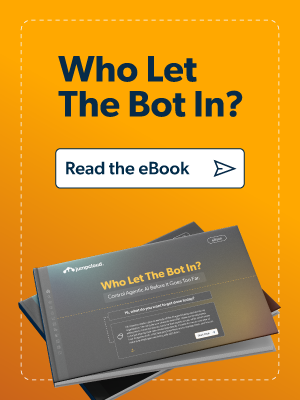The world of IT security has changed, and it happened faster than most of us realized.
If your team is still being trained to spot phishing emails based on poor grammar, strange capitalization, or generic greetings, you need to stop. The bad guys don’t make those mistakes anymore!
The simple, terrifying truth? 40% of all phishing emails targeting businesses are now generated by AI. That shocking figure means nearly half of the attacks hitting your inbox are perfectly personalized, grammatically flawless, and designed to look exactly like the real thing.
This is the new era of cyber threats, and it demands an entirely new defense strategy.
The AI Advantage: Why Attackers Are Winning
Artificial intelligence (AI) has removed the human bottleneck for cybercriminals. Attackers no longer need to hire skilled writers or translators; they simply use a large language model (LLM) to execute massive, highly personalized campaigns instantly.
This shift has created a dual threat:
- Massive scale and speed: AI saves spammers up to 95% in campaign costs, according to recent research. This incredible return on investment drives up the volume of attacks exponentially, meaning your team is facing more scams than ever before.
- Sophisticated personalization: AI analyzes public data from sources like LinkedIn, company websites, and social media to craft messages that perfectly mimic a coworker, a C-suite executive, or a trusted vendor. The attack isn’t a generic “invoice due”; it’s a perfectly timed, urgent request from a person you recognize. This is social engineering at its most sophisticated.
The result is a wave of phishing, vishing (voice), and smishing (text) scams that are exponentially more dangerous.
Quiz: Is Your Security Posture AI-Proof?
Don’t just read about the risks—measure them. This four-question assessment will score your organization’s readiness against the latest AI-enhanced phishing attacks.
The Two Pillars of AI-Ready Defense
Fighting an AI-enhanced threat requires a layered approach, simultaneously upgrading your human and technological defenses.
Pillar 1: Retrain Your Team for Behavior, Not Typos
Training your employees to spot a malicious link is no longer enough; you need to train them to question context and behavior.
The focus must shift from inspecting the email’s quality to inspecting the request’s legitimacy. Your team needs to adopt a mandatory “trust but verify” mindset.
This involves:
- Evolved simulation campaigns: Move beyond simple lures to test employees with AI-enhanced impersonations of leadership.
- Vishing/Smishing drills: Practice how to handle suspicious text messages or phone calls—the key is verifying the request through a known, alternate channel, not the one the suspicious message came through.
Your people are the first line of defense, but they need an upgraded manual to stand a chance.
Pillar 2: The Non-negotiable Tech Safety Net
When a sophisticated AI-generated email inevitably slips through, your technology stack must be the safety net that prevents a breach.
We break down the technical controls in detail in the manual, but here are the three nonnegotiable solutions you must have in place:
- Multi-factor authentication (MFA): This is the single most effective technical control. Even if an employee is tricked into entering their password, MFA stops the attack dead.
- Advanced Threat Protection (ATP) & SEG: Upgrade your filters to solutions that use AI and machine learning (ML) to look for malicious behavior and intent, not just known signatures.
- DNS filtering: A critical layer that prevents users from ever reaching a known fraudulent site, even if they click the link in the email.
Download Your AI-Ready Roadmap Today
Stop guessing and start defending. The risk of inaction is too high when 40% of your inbox is a highly personalized trap.
The IT-AI Protection Manual provides the clear, actionable strategies you need to fight back. It includes a deep dive into AI-powered phishing, deepfake fraud, and polymorphic ransomware, giving you the complete roadmap for training your team and securing your technology stack.Don’t let AI build a better attack than your defense. Get your copy now!




